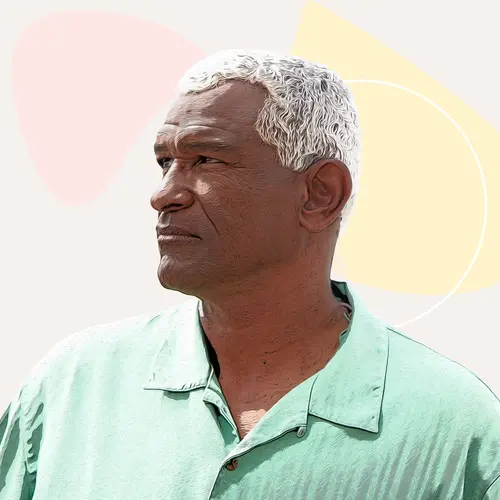Thanks to advances in screening and research, more people are surviving lung cancer today than ever before. Between 2016 and 2021, the survival rate for all people in the U.S. rose by 14%.
Unfortunately, lung cancer is still the leading cause of cancer deaths in the U.S. and around the world. The survival rate is lower in communities of color, including Native Americans (American Indians and Alaska Natives). In some parts of the country, Native Americans die of lung cancer more than any other ethnic group.
Lung Cancer Rates Among Native Americans
According to the CDC, at least 1,420 Native Americans living on or near tribal lands were diagnosed with lung or bronchus cancer in 2019. More than 800 Native Americans died of the disease.
Lung cancer is the third most common type of cancer among Native Americans, after breast and prostate cancers. It is the deadliest form of cancer among Native Americans and the U.S. population as a whole.
Lung Cancer Rates by Sex, Age, and Location
Here’s a look at how lung cancer affects the Native community by sex, age, and where you live:
Age
Native Americans are more likely to have lung cancer at a younger age than white Americans. Research shows that 23% of lung cancer cases among Native Americans happen before age 60, compared to 16% for white Americans.
Sex
Both men and women in Native communities have higher odds of getting lung cancer than in those in Hispanic or Asian communities. But their odds are not as great as those of Black and white Americans.
Location
Native Americans living in certain parts of the U.S. are more likely to have lung cancer than white Americans. Native Americans have higher lung cancer rates than non-Hispanic white Americans in:
- Alaska
- The Northern Plains (Indiana, Iowa, Michigan, Minnesota, Montana, Nebraska, North Dakota, South Dakota, Wisconsin, and Wyoming)
- The Southern Plains (Kansas, Oklahoma, and Texas)
- The Pacific Coast (California, Idaho, Oregon, and Washington)
Tobacco Use Among Native Americans
Native Americans have a very high rate of commercial tobacco use. Since the late 1970s, this group has used tobacco more than any other race or ethnicity.
Within this group:
- 1 in 2 adults ages 18 to 25 years use tobacco.
- 1 in 5 adults ages 18 and over smoke cigarettes.
- 1 in 12 adults ages 18 and over use smokeless tobacco products.
- 1 in 6 women smoke when they’re pregnant.
The highest rate of tobacco use by Native Americans is in the Northern Plains states, one of the areas in which this group is more likely to have lung cancer.
Understanding Health Care Inequalities in Lung Cancer
Health care inequalities are unfair differences in treatment. They can be based on race, ethnicity, or other things. These differences can determine the quality of medical care you get for lung cancer and other diseases. This in turn affects your health and overall quality of life.
Native Americans with lung cancer often have poorer health outcomes than white Americans. This group is:
- 17% less likely to get an early diagnosis
- 25% less likely to have surgery to remove the cancer
- 11% more likely to not have treatment
- 13% less likely to survive 5 years after diagnosis
Addressing these inequalities is important for improving the health of Native Americans living with lung cancer and other health conditions.
The Tobacco Industry’s Marketing to Native Americans
Smoking is the biggest cause of lung cancer. Unfortunately, Native Americans use more tobacco than any other racial or ethnic group in the U.S. In 2014, 40% of Native Americans used commercial tobacco. This includes 57% of young adults. As a result, Native Americans are more likely to get sick and die from tobacco-related illnesses than the general U.S. population.
Why are Native Americans more likely to use and get sick from tobacco? One reason is that for decades, tobacco companies have taken advantage of tax laws and cultural imagery to attract Native smokers.
Tribal lands are considered sovereign territories. This means they’re not subject to state smoking restrictions or cigarette taxes. Because of this legal status, tobacco companies are able to sell cigarettes at much lower prices on tribal lands than in neighboring states. It also means that tribal communities aren’t helped by clean indoor air policies and other statutes. These regulations have lowered smoking rates among the general U.S. population.
Also, tobacco companies have focused marketing campaigns on Native American communities. They earn goodwill by donating to tribal organizations and offering promotions that highlight local culture. Advertisements and brand logos have long tapped into Native people’s pride in their heritage by featuring traditional imagery.
Finally, tobacco companies directly advertised to Native tweens and teens during the 1990s. They were aware that stresses like poverty and discrimination tend to make people more likely to start smoking at a young age. They also sponsored youth smoking prevention campaigns for Native teens that quietly encouraged tobacco use. In fact, taking part in these programs was linked to this group’s greater approval of smoking and increased likelihood of smoking as adults.
U.S. law helped the tobacco companies’ cause as well. Some traditional Native ceremonies use nicotine-free tobacco plants. These are different from the addictive strains that are in cigarettes sold by tobacco companies today. Bans on traditional tobacco in the 1800s and 1900s forced Native communities to switch to commercially available, addictive tobacco.
Today, many tribes and groups like the National Native Network are reclaiming their heritage by growing traditional tobacco plants. They’re also raising awareness of the dangers of commercial tobacco.

